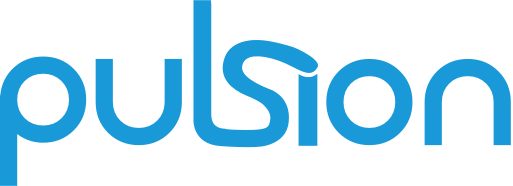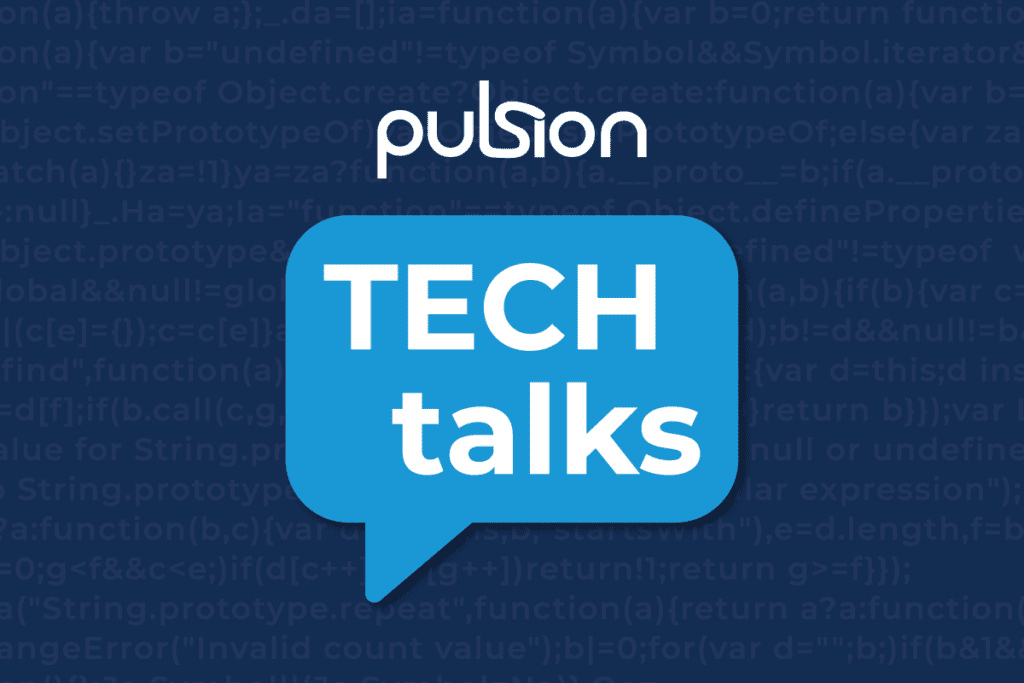The software development life cycle refers to all the phases applied to software development projects, but the phases aren’t the only key factor impacting the SDLC.
It helps to know the models because statistical analysis shows the heavyweight model is best suited to medium to large projects, while the Agile model works across all project sizes.
Let our expert team share the models and phases to help you understand the SDLC better.
What Is a Software Development Life Cycle?
The software development life cycle (SDLC) defines the requirements-gathering, analysis, prototyping, documentation, testing, and launch phases in a software development project.
The SDLC describes a set of phases every software development project progresses through from start to finish, including a maintenance phase that follows the development life cycle.
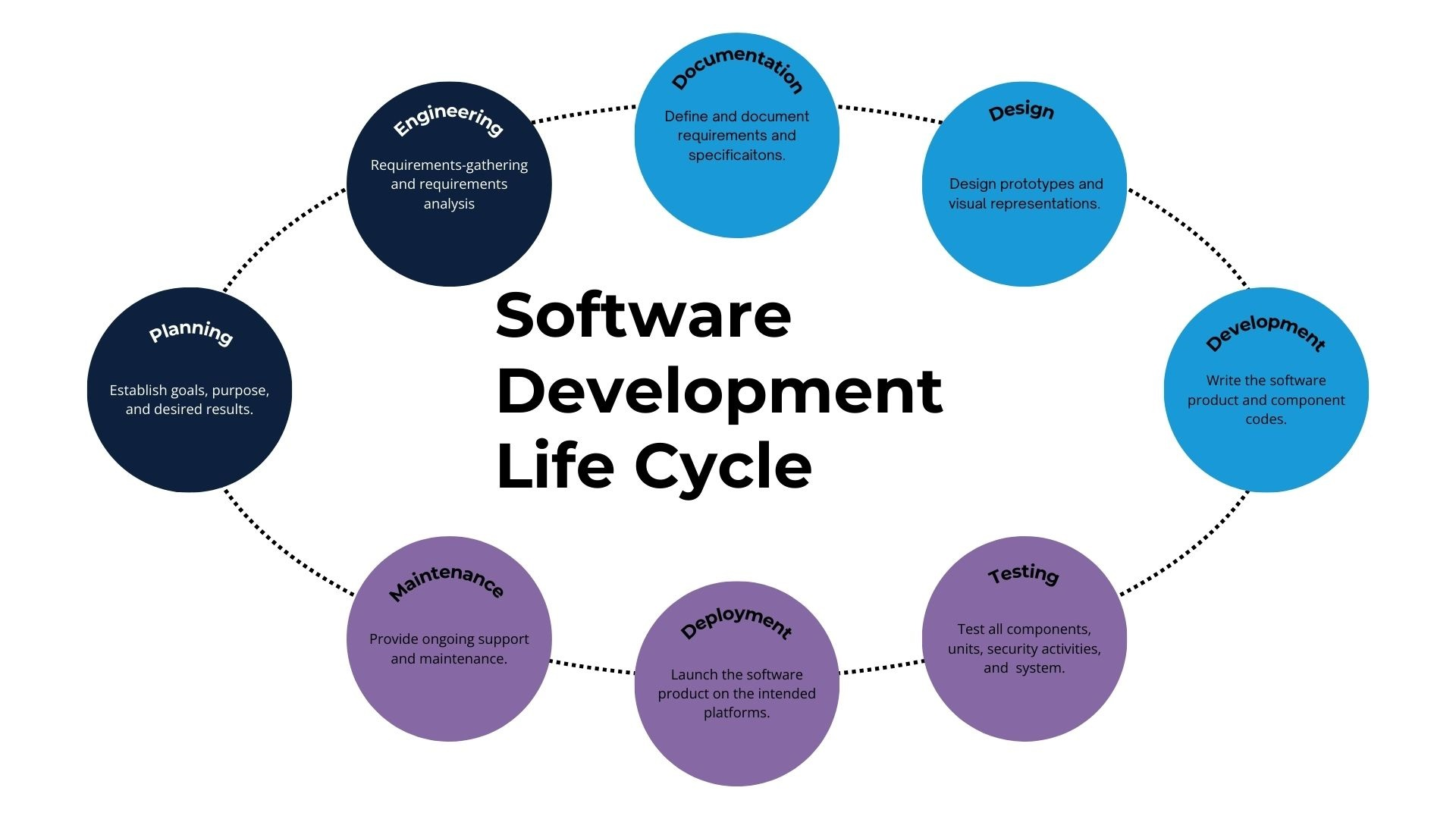
What Is the Purpose of the Software Development Life Cycle (SDLC)?
The SDLC has four key purposes, including:
Making the software development project as cost-effective as possible
Meeting deadlines or milestones to ensure the project remains on track
Outlining precise expectations to deliver software that meets business needs
Testing the software thoroughly before its launch
Pulsion Technology and the SDLC Models
At Pulsion Technology, we strive to follow the most comprehensive SDLC, using the most common models to ensure smooth project management.
Read more about us to see how we’ve spent over three decades serving companies of all sizes. We partner with multiple well-known clients, including NHS Scotland and Citizens Advice Scotland.
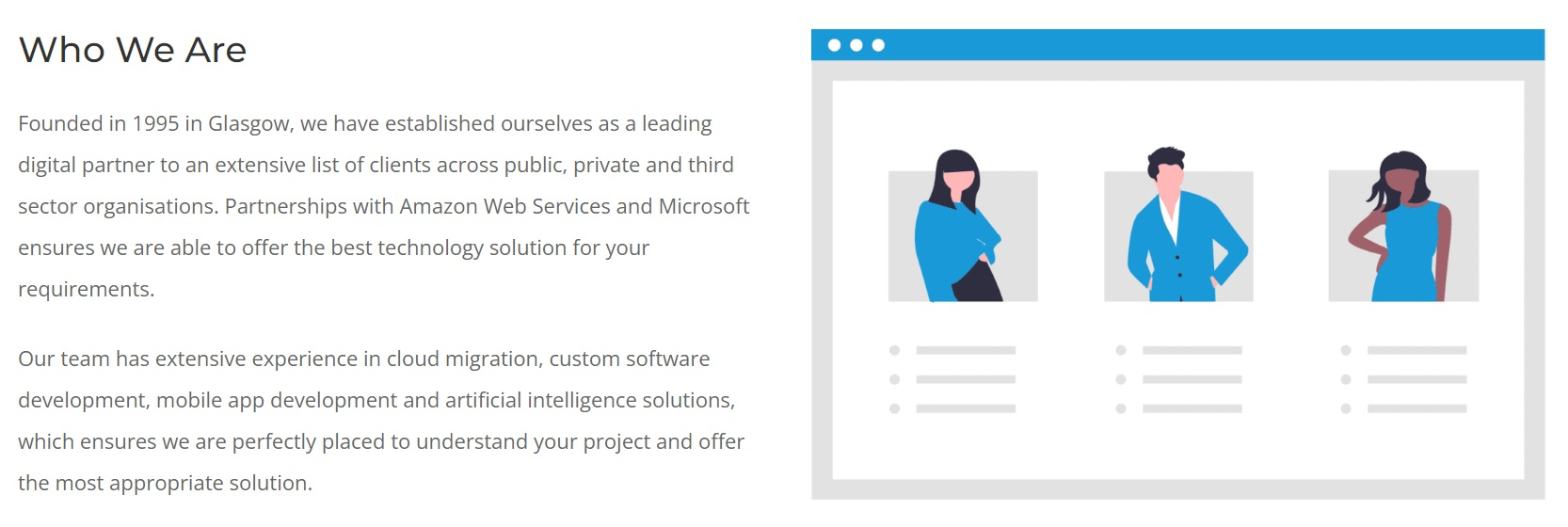
Speak to one of our digital strategy consultants or hire dedicated developers from our list of software engineers. Alternatively, contact us today to discuss the potential for your future SDLC.
We specialise in custom software development, which follows an SDLC, specialising in the following:
Software Development Life Cycle Benefits
Software development following a life cycle with models and phases brings the following benefits:
Identify clear goals
Implement sufficient testing
Discover and mitigate problems early
Improved risk management
The design is clear and concise
Record precise requirements for user and business needs
A better budget and deadline outcome
No miscommunication or misinformation
A high-quality software product launch
Optimal production environment
A development team is on the same page
The 8 Software Development Life Cycle Phases
Development teams don’t rush into software projects without a proper planning phase. Also, the software development lifecycle should outline the precise development process.
It must also use the most suitable programming language, include an extensive architecture analysis, and implement thorough security testing for a software project.
Let’s discover how each development stage in the development cycle works from a project management viewpoint that leads to optimal system performance and high-quality software.
1. SDLC Project Planning Phase
The project planning phase is also a part of the discovery phase. The planning phase discovers the project’s goals, purpose, and desired results as a part of any SDLC process.
A project manager meets with the stakeholders within your company to the purpose of your intended software project and the results you wish to achieve.
Project managers also assign roles to the development and analysis teams, set projected milestones or deadlines, plan a project budget, and provide a customer expectations overview.
Management information systems is a process managers use to help business owners decide on goals. It helps to know the top 10 questions to ask a software development company during this SDLC phase.
2. SDLC Requirements Engineering Phase
The previous phase included business analysis, recognising software development goals, budget parameters, and more. However, the second phase is a more detailed plan and analysis phase to outline specific requirements to complete the intended project.
Requirements engineering has a few steps to ensure your project’s specifications meet user and stakeholder expectations. Here’s a quick overview of the steps in the requirements engineering phase:
A business analyst uses requirements gathering to collect relevant requirements for the intended software product and the key stakeholders, using interviews, observations, workshops, and focus groups. Stakeholders include anyone who will use or benefit from the software project.
The business analyst then conducts a thorough requirements analysis to determine the expectations and needs of the final product. The analysis phase ensures the product or software specifications align with high-level business requirements.
Analysts also categorise requirements before the analysis phase completes. Requirements go into output, input, process, performance, and control categories before being assigned to functional and non-functional requirements for proper documentation.
Finally, analysts prioritise the requirements to offer flexible specifications before documentation. For example, an analyst determines whether a system requirement is critical, moderate, or optional. Optional requirements are nice to have but can be cut to meet the budget.
A business analysis expert uses risk analysis techniques, like the MoSCow Method, Hundred Dollar Method, Kano Analysis, or Analytic Hierarchy Process to categorise and prioritise requirements.
Our specialised Pulsion team developed an online tool to help businesses with the requirements engineering phase. Read about Requiment, its benefits, and how to sign up for a free trial.
Requiment includes a guided process to simplify requirements analysis and task generation, and you’ll have access to automated output reports. Watch our demo videos for more Requiment information.
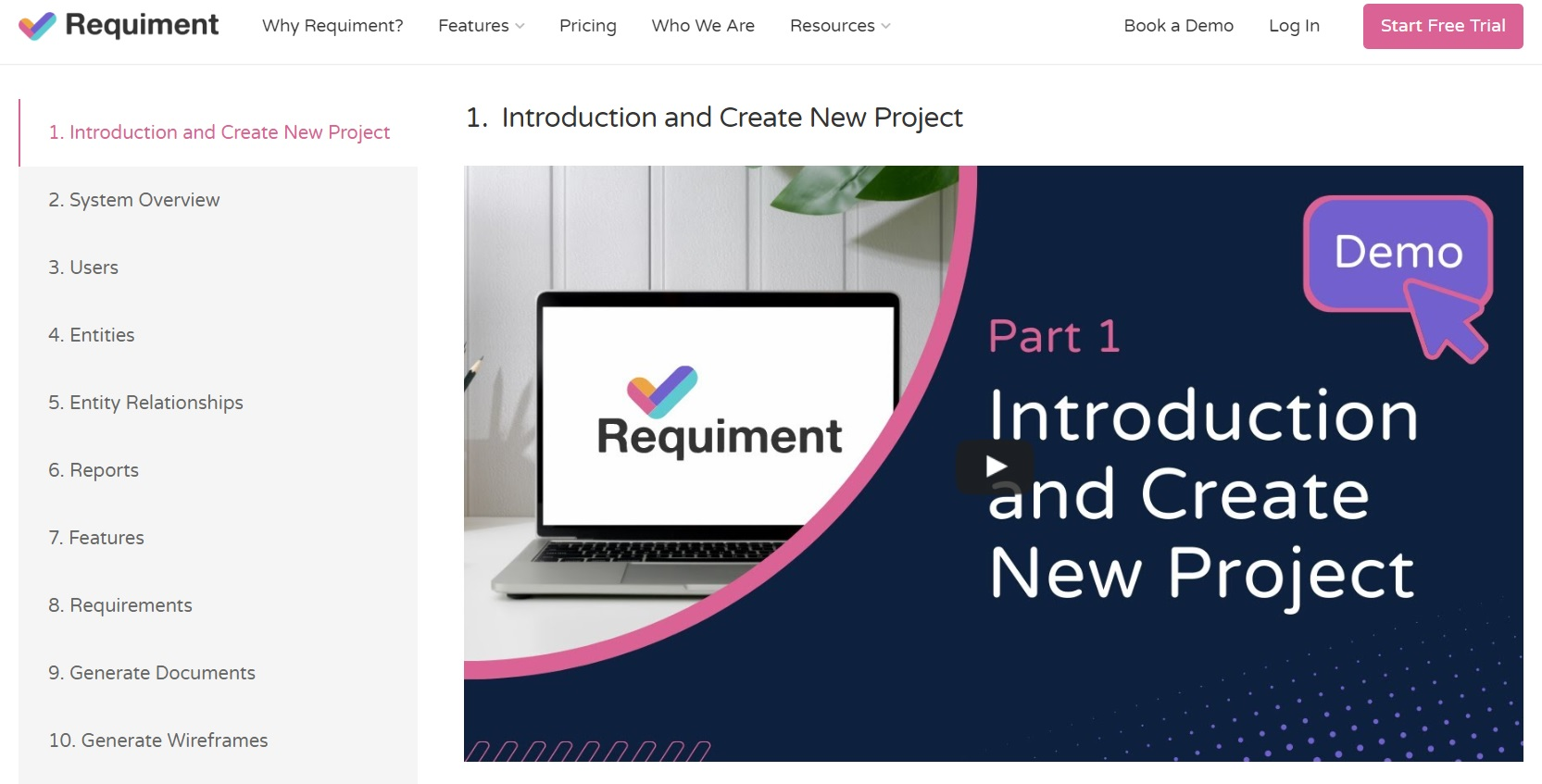
Read more about the importance of software development life cycle requirements gathering and analysis to understand how this phase can elevate your chance of success.
3. Define and Requirements Document Phase
Software requirement specification is one of the few relevant and instrumental steps toward documenting the requirements captured in phase two.
To enhance specific software or design new software in the desired product environment, requirements definitions and documentation are instrumental.
Business analysts or project managers will deliver a software requirement specification (SRS) document. The SRS document will describe what the software does and how it’s expected to perform.
The document will resemble a detailed plan for the development process, the roles of internal and external experts working on the project, and how the system will perform complex functions.
Our Requiment online tool also lets you generate documents with specifications before development.
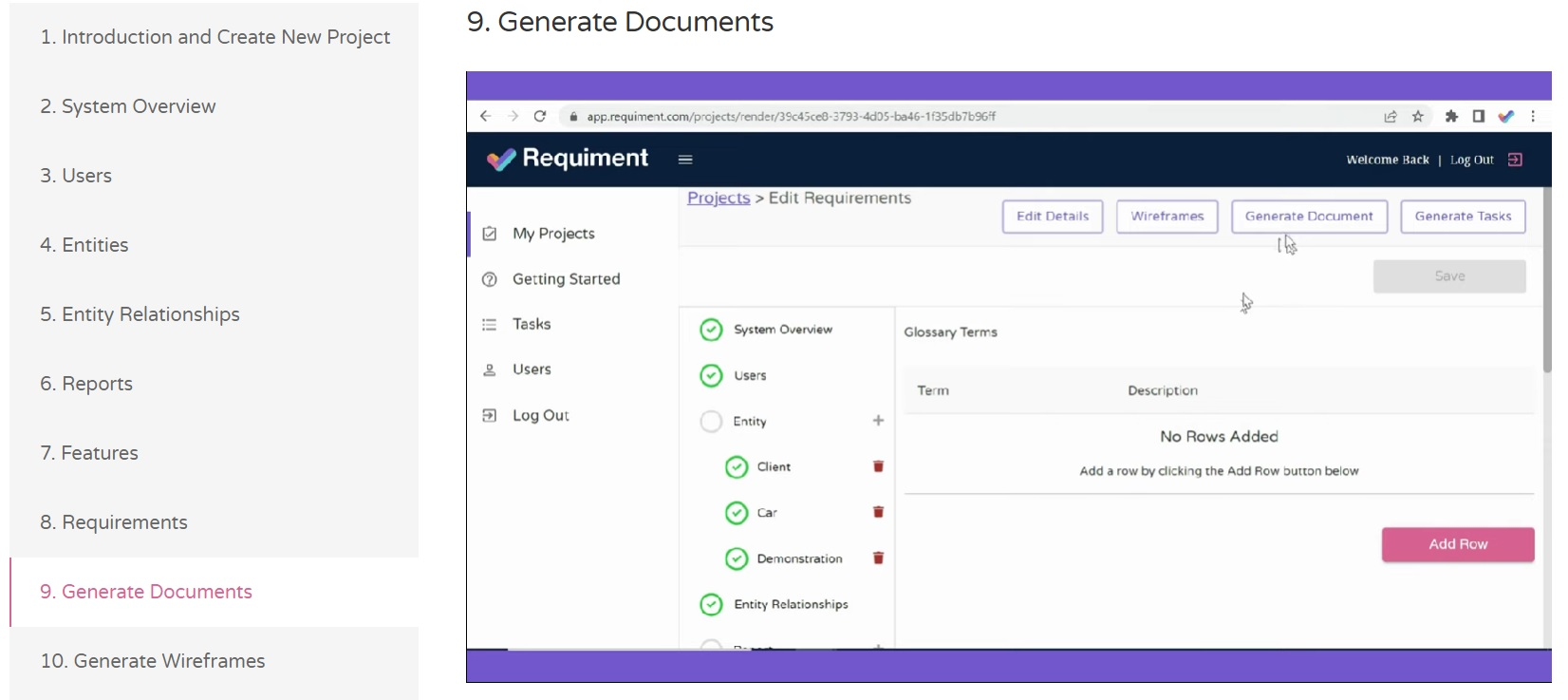
Learn how to write a software requirements document (SRD) to enhance specific software or document the specifications of a new software program.
4. Design and Prototyping Phase
The SDLC design phase defines how the software will work by choosing the programming language. Development teams also design the following aspects of your software product:
Architecture Information – Determine software development industry or company industry standards and use a template or opt for custom designs and screen layouts.
User Interface (UI) and User Experience (UX) – Developers develop how users interact with the software product and experience changes, performance, and authentication.
Security – Define how the application remains secure, how to protect user data, and how to keep the general application data safe from cyber threats or other risks.
Programming – Developers choose the software program’s programming language, technology stack, tools, and functions.
Prototyping – Build a basic visual representation of how the software works, how users interact with it, how the system performs under different loads, etc.
Your business and users should have a basic overview and sample of the product by the end of the design phase, having a prototype or minimum viable product (MVP) if you choose that route.
Check out our software development standards to understand the design stage architecture.
5. The Actual Development Phase
AI-assisted and generative AI were the most popular technologies used in development in 2023. Nonetheless, traditional software development isn’t possible without the prior phases.
The actual software development process is one of the most impacted phases if the first phases aren’t completed properly. The development process relies heavily on the documented requirements.
Incorrect business analysis, requirements definitions, and prototyping could lead the development team astray. Hence, the development stage is considered one of the most sensitive phases of SDLC.
Larger high-quality software projects have a development team programming or writing the code, and smaller projects may have a dedicated developer writing the code for review in the next phase.
Solid guidelines and specifications from the previous phases guide software developers while writing the code. Learn more about our 17 software development best practices for writing code in 2024.
6. The Software and Security Testing Phase
The testing stage determines whether multiple functions and features work as predicted. The testing phase is integral to your software project’s success.
Conducting security assessments in an intended system design ensures security assurance activities in the testing stage. The testing phase checks software components or units and includes a code review.
Here are some testing techniques used during the testing phase:
Integration testing – Examines how various units in a grouped system perform under pressure.
Penetration testing – Penetration testing is a controlled attack to determine the system’s security.
Performance testing – Assesses scalability and performance under different conditions.
Security testing – Used to discover system vulnerabilities and weaknesses.
Software testing – Determines whether the software does what it’s intended to do.
System testing – Verifies whether the system’s components function according to requirements.
Unit testing – Determines whether components or system units work as expected.
Usability testing – Tests how well the user interface and experience work.
User acceptance testing – Examines customer feedback to determine if the promise is delivered.
Also, read about AI testing as an integral part of the future of software development.
7. The Software Deployment Phase
Development teams worked hard developing your software and testing all parameters before the deployment phase, where your product goes live in the chosen product environments.
Developers ensure the product is free of errors or bugs in the development backlog before it goes live. The team also ensures the product is up-to-date with industry best practices for a competitive edge.
The final product is delivered to the end user. A canary release describes a smaller system update launching to a limited number of users. However, your software is live and ready for feedback and use.
Learn more about deployment best practices in the stages of custom software development.
8. The Support and Maintenance Phase
The system typically consists of backend and frontend technology stacks requiring ongoing support and maintenance. Your development company may recommend scheduling improved risk management.
A software product should always evolve, improve, and mitigate new risks as they unfold. Also, changing requirements may call for further software improvements.
Some software development companies will implement a validation model to gather user feedback and determine whether the model output compares to real-world observations.
Additionally, maintenance is a stage of further improvement in the Agile model. On the other hand, maintenance is the final stage of the Waterfall model.
Read more about Waterfall vs. Agile: Which is the best for the software development process?
The 7 Most Common SDLC Models
Here are the most common lifecycle management methodologies used during the SDLC phases. We provide Agile models in our custom software development life cycle. However, we use any model that suits your project’s needs, budget, and timeline.
SDLC Agile Model
What is the Agile software development process? The Agile model, also known as Agile methodology, produces ongoing release cycles to identify early risk and failure.
Each development life cycle features incremental changes from the last release. Meanwhile, the product is tested at each iteration stage. However, it differs from the iterative model, working for all project sizes.
SDLC Big Bang Model
The Big Bang model is somewhat of a trainwreck among trusted development companies because developers dive right into development without proper planning or analysis.
The development team will implement requirements as they arrive or change, and complete software revamps are common with ever-changing requirements.
SDLC DevOps Model
The DevOps model is new to a software development life cycle (SDLC). It combines Agile and Lean methodologies to improve the results of your software development project.
Developers and operations teams work closely together throughout all of the SDLC phases. However, the collaboration means the development phase can begin before the design phase is completed.
SDLC Iterative Model
The iterative process is repetitive. Project teams don’t start with well-defined requirements. Instead, they use a small set of system requirements, develop the product, and test its efficacy.
Each iteration reveals the need for further improvements, allowing development teams to start over with the minimised phases until they have an end product. It sounds similar to Agile but uses small requirement sets.
SDLC Lean Model
This model doesn’t focus on multi-tasking, only on a single process at a time. The Lean model follows seven lean principles in a specific order throughout an SDLC, including:
Waste elimination
Amplify learning
Make decisions as late as possible
Deliver software as fast as possible
Empower the team
Integrate integrity
See the whole product
SDLC Spiral Model
The Spiral model is one of the most flexible SDLC models and works similarly to the iterative model, using repetition to improve the final product. However, the Spiral SDLC model only has four phases:
Project planning
Risk analysis
Engineering or development
Product evaluation
SDLC Waterfall Model
The Waterfall model is the oldest structured methodology in the software development life cycle. It’s a simple process of finishing one phase before moving on to the next, much like a waterfall.
Each stage in the Waterfall SDLC model relies on information and the completion of the previous stage before the next one starts. It’s a rigid but simple-to-understand and manage SDLC model.
What Are SDLC vs. Other Life Cycle Models?
The software development life cycle defines the entire process, timeline, and budget behind software development. However, other life cycles exist within the SDLC or differ entirely. Let’s show you the differences between software development-related life cycles.
SDLC vs. Systems Development Lifecycle
The systems development life cycle is part of the other lifecycle management methodologies. It’s the process of planning and creating an IT system for businesses.
The systems development lifecycle refers to setting up hardware, software, and components that collaborate to complete complex tasks in an IT system’s framework, which includes on-site work.
SDLC vs. Software Testing Life Cycle (STLC)
The software testing life cycle (STLC) focuses on the testing types mentioned in the sixth SDLC phase. It includes the integration, security, performance, unit, software, and system testing life cycle.
The STLC only focuses on the software testing stage, whereas the SDLC describes all of the eight phases in software development, including discovery, analysis, and deployment.
SDLC vs. Product Development Life Cycle (PDLC)
The product development life cycle (PDLC) only describes the budget, timelines, and tasks within an SDLC’s actual software development phase.
It covers the time developers require to write the code with the intended programming languages to finalise the product before it launches into a live environment.
SDLC vs. Software Release Life Cycle (SRLC)
The software release life cycle (SRLC) refers to requirements management to identify changing requirements and implement changes and improvements after deployment.
It doesn’t only describe the release of an initial software product before maintenance and support. It’s an ongoing process that includes milestones for testing and improvements.
Summing Up the Software Development Life Cycle
The software development life cycle has eight critical phases and seven models. Each phase is instrumental to the next, especially if you’re using Agile or Waterfall models.
Contact us today to learn more about our preferred models. Some SDLC models are superior to others, particularly for custom or unusual projects. Speak to use about your business needs for an SDLC.
Software Development Life Cycle FAQs
Do Smaller Projects Use SDLC Models and Phases?
Agile methodology is the most flexible SDLC model used for any size project. It follows the primary phases, including planning, requirements engineering, and documentation before development. However, the phases are smaller and allow for incremental SDLC processes.
What Are the 2 Main Types of SDLC?
Agile and Waterfall models, also known as adaptive vs. predictive or incremental vs. heavyweight models, are the two primary methodologies used in software development. The Agile model follows incremental development phases, while the heavyweight alternative uses set phases, like a waterfall.
What Is an Example of a Software Development Life Cycle?
The ultimate software development life cycle example has eight phases, including:
Project planning
Requirements engineering
Requirements documentation
Design and prototyping
Development
Software testing
Deployment
Maintenance and support
Which SDLC Phase Is the Most Critical for Project Success?
Requirements gathering and analysis are critical to understanding the project’s needs and desired result. All stakeholders determine the requirements, while an analyst will analyse the gravity of each requirement before adding it to documents for development teams to follow.
Which SDLC Model Is the Best for Complex Projects?
Well-structured and comprehensive models that follow the SDLC phases in order are the best for complex projects. For example, Spiral or Waterfall methodologies work better for complex projects.
Which SDLC Model Has the Highest Risk?
The Big Bang SDLC model is too risky for software development projects. The model doesn’t use requirements engineering before development, leading to misunderstood requirements, changing requirements, and complete revisions after software development.
Which SDLC Phase Is the Hardest to Implement?
The actual development stage is the hardest to implement. However, proper requirements gathering, analysis, and documentation can simplify the development process and coding for your product.
What Are the Disadvantages of an SDLC?
Some rigid SDLC models may lead to the following disadvantages:
A lack of communication
Misaligned results
Project delays
